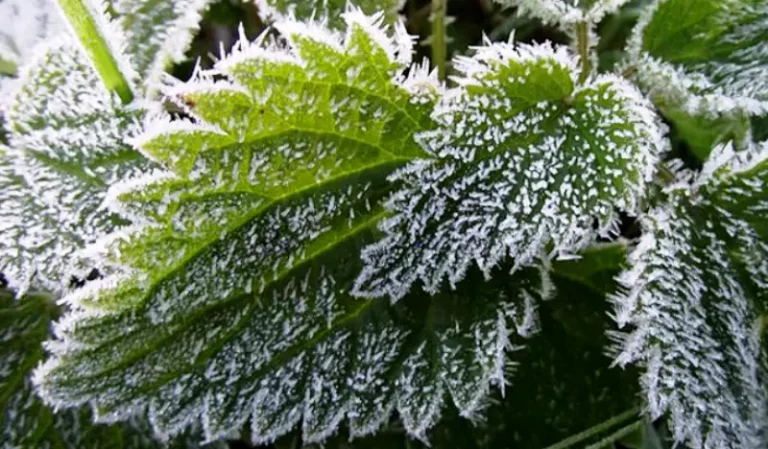An unexpected frost can wreak havoc on your garden, and you don’t want your hard work to go to waste over a few hours of freezing. So whether you’re a budding or seasoned gardener, you know that you need to stay vigilant and watch the weather, especially in the spring and early fall.
Temperature plays a critical role in plant health. While you cannot control the weather, you can take protective measures to ensure your plants don’t freeze and wilt. In this article we discuss the effects of frost, ways to protect your plants from freezing, and whether you can save them after frost damage.
How Frost Affects Plants
Plants are living organisms, as you know, and they don’t like to freeze. They can handle a light frost, but anything below 28° is a recipe for disaster. When water freezes inside plant cells, it disrupts their internal flow, which results in severe damage. Imagine drinking a glass of water, and then it suddenly freezes while moving through your body.
If you want to save your plants, you’ll need to keep a close eye on the weather every day. Check your local frost dates and keep an eye on the sky. Clear skies mixed with moisture in the air are signs that frost could strike.
Protecting Your Plants
There are several methods for protecting your plants from frost, and they are all effortless. The hardest part of this process is keeping up with the weather since it can be unpredictable at times.
Add a Layer of Mulch
Adding 3-6 inches of mulch to your garden can act as an insulating blanket for your plants. Just remember to leave some space around the stem, so you don’t block the soil’s heat from traveling through the plant. After the frost is over, you should remove the extra layer of mulch.
If you want to stay prepared, keep some on deck at all times so you can act swiftly before the frost. To avoid going to the store at the last minute to find empty shelves, mulch supply and delivery in Hancock, MD, will bring it right to your door early in the season.
Cover Your Plants
There are several ways to cover your plants. The first is using cloches to protect each plant. You can make some by cutting off the bottom of a plastic juice or soda bottle. Just don’t forget to remove the lid so your plants can still breathe.
However, if you don’t have the budget or time to gather clothes, you can also cover your plants with a light blanket. If you have trees, wrap them with a bandage to protect the fruit from going bad. Just don’t forget to take it off in the morning so your garden can bask in the warm sunlight.
Take Potted Plants Inside
Since potted plants don’t have the same heat retention abilities as plants in the ground, they’re more likely to be damaged from frost. So you’ll want to bring them inside. However, be careful when taking them in, as drastic temperature changes will also shock and kill them. Instead, keep them in the garage or basement where the temperature is nearly the same as outside. Additionally, you’ll want to check for pest infestation before bringing them in and keep them away from your houseplants.
Water
You might be thinking that freezing water is the reason we’re here in the first place. However, if you water your plants in the warm afternoon the day before an expected frost, you’ll help the soil retain heat, further protecting your plants.
Airflow
A lack of wind can also cause freezing, as crazy as that may seem. With no warm air being circulated to your plants, they’re more likely to suffer the ravages of frost. To help with airflow, consider investing in a large fan to blow warm air through the garden.
How to Deal With Frost Damage
Frost damage is apparent in plants, as leaves turn black or brown. Your first thought may be to prune the dead leaves, but you could cause more damage by doing so. Since frost can leave your plants dehydrated, the first thing you’ll want to do is water them. Then, once they’re healthy, strong, and the threat of frost is gone, you can go ahead and prune the dead leaves.
Caring for your plants on deck takes a lot of work, and you don’t want your efforts to go to waste because of a sudden frost. The most important thing you can do is watch the weather, keep them healthy, and have protective gear on hand, so you’re not scrambling at the last minute to find the necessary materials.
However, if you do find yourself unprepared, you can improvise. For example, you can dig through your closets to find old blankets or light towels to cover the plants. In addition, dead leaves can also act as insulators if you don’t have mulch.

